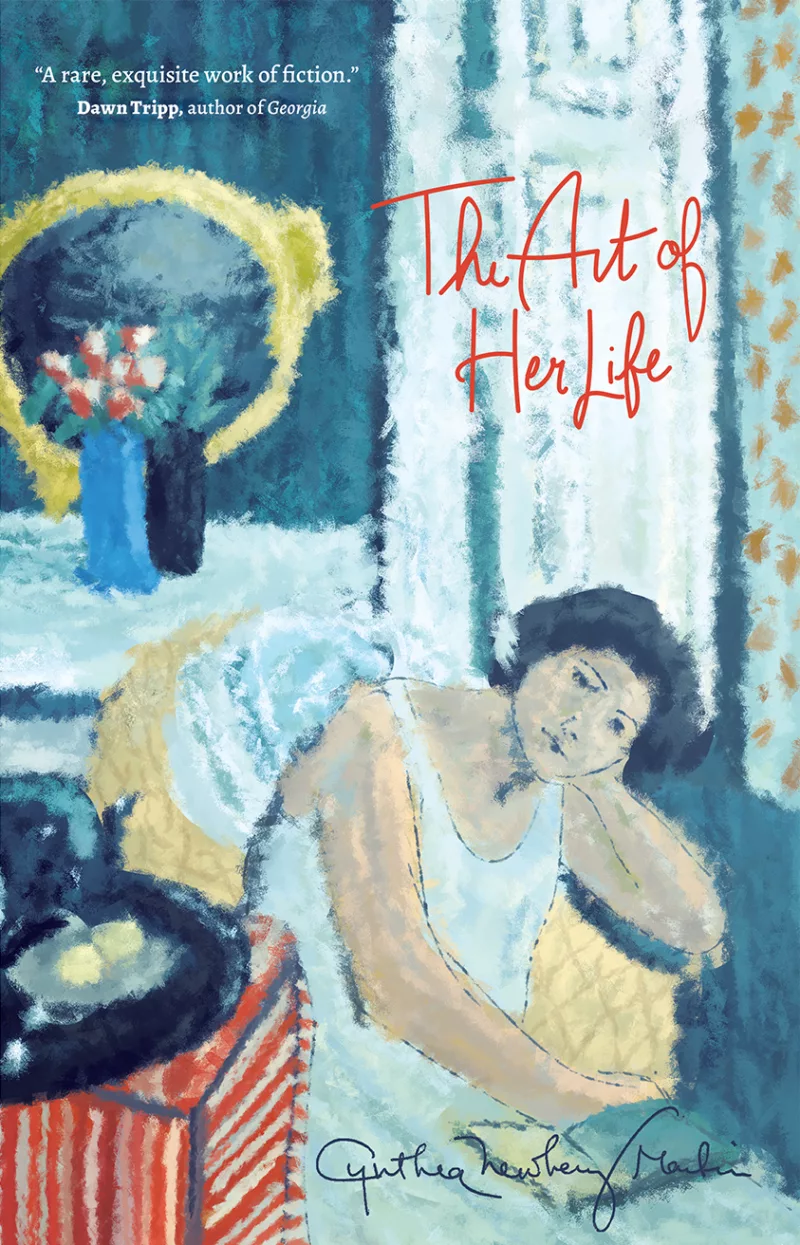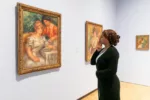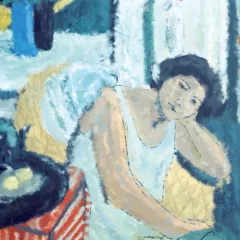In her latest novel, The Art of Her Life, author Cynthia Newberry Martin examines the precarious balancing act between art, life, love, and illness. Her protagonist, Emily Hall, is a middle-aged, single mother of two young girls, and works as a registrar at an art museum in Charleston, SC. Emily is hopeful that her submission to a forthcoming exhibition will be accepted: people from the local community, including staff at the museum, are asked to select their favorite works of art and write a few lines about why they chose those particular pieces as their submissions for the show. Emily chooses “Breakfast” by Henri Matisse.
The late French modernist, known for his expressive use of color, plays a central role in the book. Indeed, each of its four sections—Breakfast, The Yellow Curtain, The Invalid, and Blue Nudes—are named after titles of Matisse paintings. (While there are no illustrations in the novel, Martin includes an addendum with Web addresses to the paintings mentioned in the text. Also, the cover art of the book is a facsimile of Matisse’s “Breakfast.”)
After finding a moment of solace at the beginning of the story, Emily reflects on the time she first saw Matisse’s Breakfast as a little girl, and transcribes her memory for her submission to the exhibition:
At nine years old, the spell of once-upon-a-time had already made its mark. I would fall in love, get married, have children, and live happily ever after. But with that first trip to a museum, as I stood in front of “Breakfast” by Henri Matisse, I knew—with the certainty that only a child can have—that this painting would be as much a part of my life story as falling in love and getting married. Twenty-seven years later, it still is.
At the beginning of the narrative, Emily is dating Mark, an old college buddy with whom she has become intimate years later, following her separation with her husband whom she divorced before his death in a car accident. Emily resists letting Mark fully into her life. Though he is good with her daughters, and she clearly loves him, Emily doesn’t want to find herself beholden to a man ever again. This creates tension by the end of the first quadrant of the book when Mark reluctantly leaves to be part of an archeological excavation in Turkey. He tries to secure their relationship before leaving by proposing to her, but she turns him down. Soon after Mark’s departure, Emily learns that she may have ovarian cancer.

Martin writes in a polished, accessible prose that belies the heady subjects with which her protagonist grapples. We would all like to frame our lives so as to look just right, to be “picture perfect,” as it were. However, the hard reality is that life is all too often a bit messy. The demands of the modern world make it almost impossible to live up to the ideals of art. No wonder people want to put their best photos up on social media. The book is a work of art that confronts the incongruities between art and life, yet reminds us of how the former can help heal the heartaches of the latter.
Though it is a work of fiction, The Art of Her Life rings true. I can personally attest to its authenticity: I have worked in art museums my whole adult life, first at the Harvard Art Museums and then later at the Isabella Stewart Gardner Museum in Boston, and now at the Baltimore Museum of Art (BMA), home to the world’s largest collection of artwork by Matisse, where I am currently employed.
Further still, I partook in a very similar project to the one in which Emily participates in Martin’s book. From 2021 to 2022, I and 17 colleagues of mine at the BMA worked together as part of a team on Guarding the Art, an exhibition curated by guards. As “guest curators,” we were asked to select one or two of our favorite pieces from the BMA’s collection to be a part of a group show. We worked with the various museum departments—from conservation and exhibition design to education and marketing—to learn about the curatorial process. Just as Emily struggles to integrate art into her life while attempting to stabilize a new relationship and raise two daughters, the guards who curated Guarding the Art had to combine their diverse backgrounds and interests while collaborating on the show.
Art is not everybody’s cup of tea. But in The Art of Her Life, Martin succeeds at making that cup worth drinking. Not since Still Life with Oysters and Lemon (2001) by Mark Doty has an author so skillfully integrated the themes of art and life, love and loss. Art lovers, especially those who favor Matisse, will no doubt enjoy Martin’s book. But even readers who are not fully acquainted with the art world will find it to be a spellbinding read. It’s the true sign of a good writer to be able to make a subject that not everybody’s familiar with deeply compelling. Cynthia Newberry Martin has done just that with The Art of Her Life.
For more Artblog coverage see Ruth Wolf’s piece about the book.










